From their Calico-like patterns to their impressive size, the Showa Koi Fish is a sight to behold.
If you’re a Koi carp enthusiast or a novice, the graceful Showa will make a stunning addition to your pond. Often ranked first in koi competitions, this Japanese koi fish is borderline royalty.
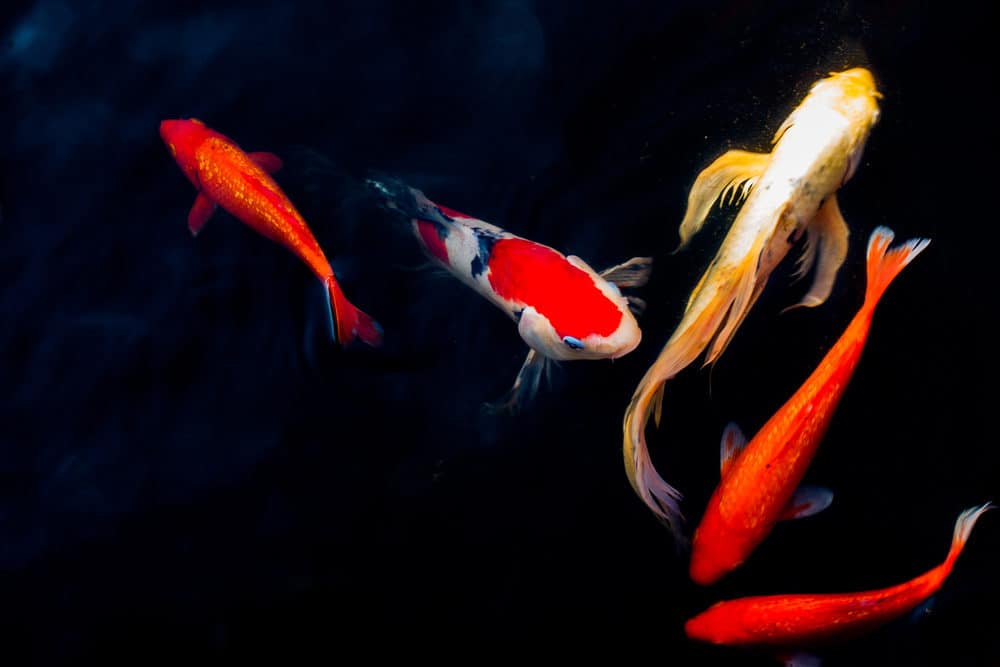
Are you looking to spruce up your koi pond with a koi breed such as the Showa koi, or maybe starting on your koi pond journey? Below is more information on the majestic Showa koi fish, its background, how to identify it, and care tips.
The first Showa koi fish emerged in 1927, during the reign of the Showa emperor in Japan. Showa koi belong to the same group as the Kōhaku and Taishō Sanshoku varieties.
Jukichi Hoshino created the Showa variety by breeding a Ki Utsuri and a Kohaku koi fish. Surprisingly, the original Showa was not exactly attractive. The scales weren’t brilliant white, but a dingy, muted yellow - different from the vibrant fish we know and love.
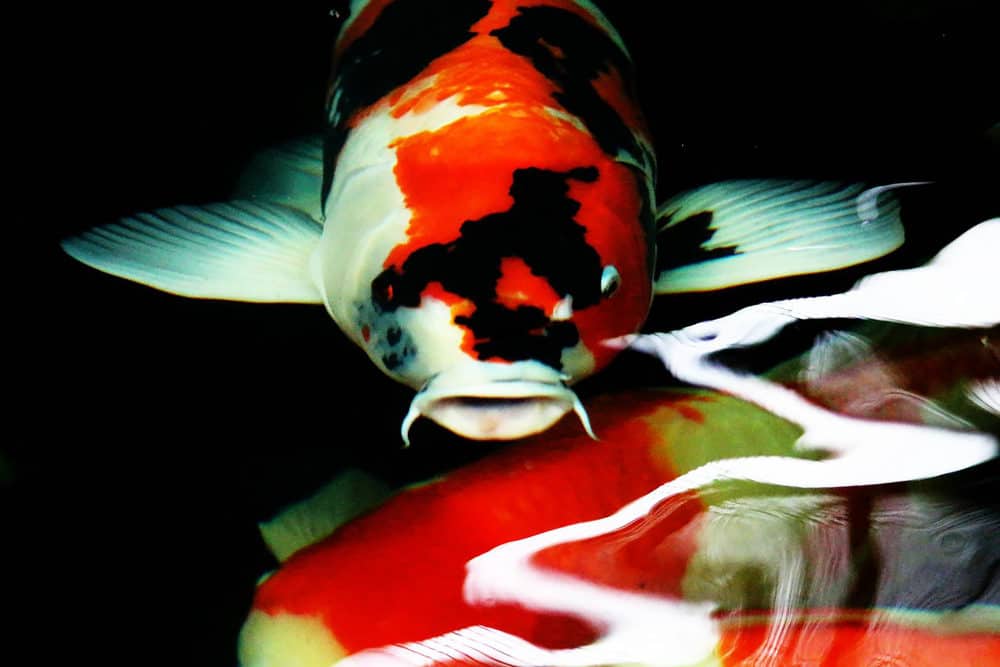
Tomiji Kobayashi introduced the modern Showa koi in 1965. He crossed a female Showa with a male Sanke koi fish - then a male Kohaku fish. The combination led to the pattern seen on Showa today.
Nowadays, the Showa koi is getting harder to separate from the Taisho koi. The mix-up might be due to a lack of breeding control or possibly human error. Inbreeding, as with any fish, is also an issue - inbred Showa koi can have crooked tails, deformed mouths, and other ailments.
Identifying a Showa fish is quite a feat, but some clear signs indicate a Showa.
To decipher the breed, you first have to know what you’re looking for, where colors should be, and pattern distribution.
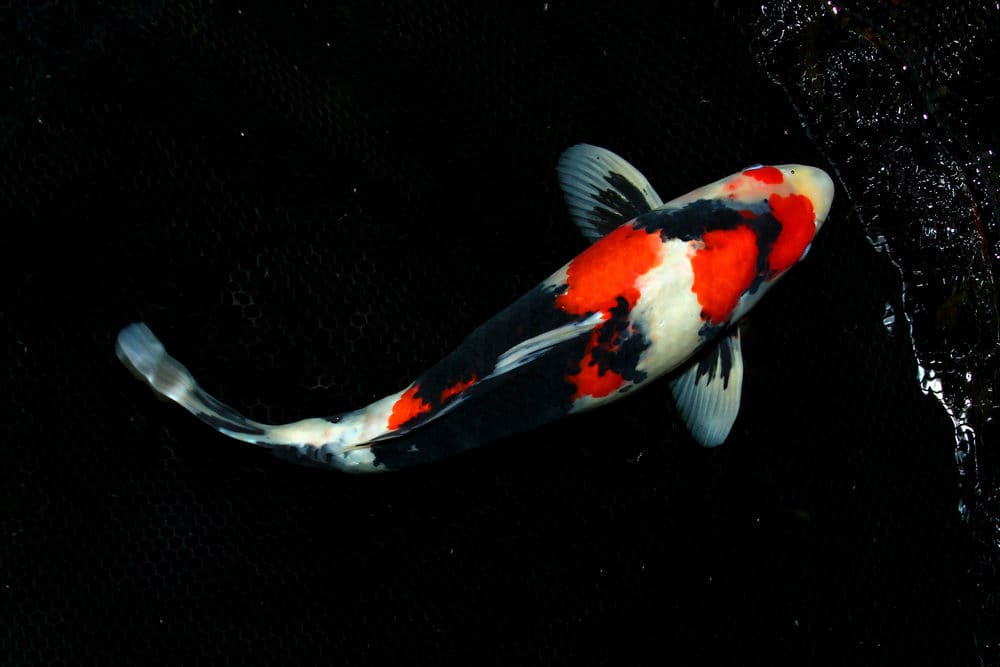
Sumi markings are the glossy black found on Showa koi, along with Taisho and Sanke varieties. However, the Sumi on a Showa has the following characteristics:
If you see a koi with smaller black splotches or Sumi that’s only seen on the top of the body - you probably aren’t looking at a Showa.
Beni is the reddish-orange markings seen along the body of the Showa koi. These red markings are on a decent amount of koi varieties, so check where the marks are to ensure you’re looking at a Showa. The Showa Beni should:
The Beni on a Showa koi should also be vibrant, shiny, and not overpowered by white scales.
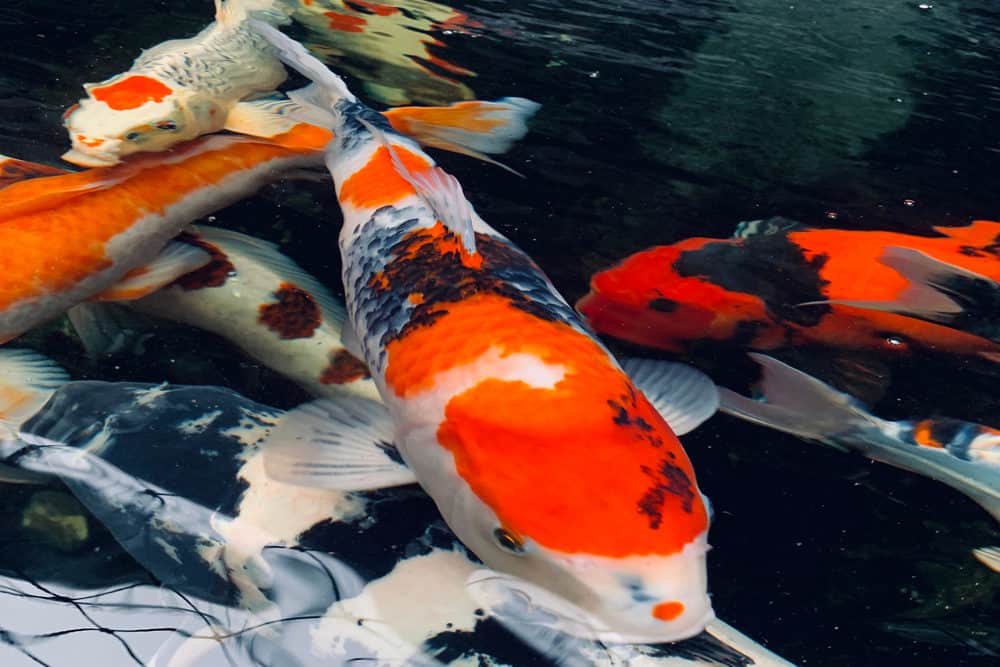
Shiroji refers to the white color of a koi fish. Shiroji on a Showa koi should look similar to the Beni. It will not be apparent near the face or in large spots on the body.
Instead, the Shiroji blends in with the Sumi to create beautiful patterns. The patterns wrap around the entire body. Note that some modern Showa koi do have more Shiroji than others due to breeding.
The easiest way to identify a Showa koi is to look at its head. The head of the body should have all three colors (Sumi, Beni, and Shiroji). If you don’t see all three colors, it’s not a Showa koi fish.
Next, check the fins. On a Showa koi, Sumi extends from the face to the pectoral fins.
Finally, make sure the colors are in bands and not in spots. Spots indicate other koi varieties.
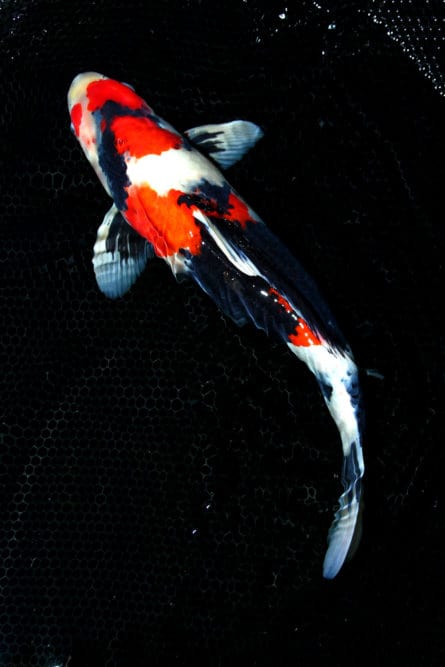
Proper care of your Showa koi is crucial to a successful koi pond. Below are a few things you can do to ensure a long, happy life for your koi.
Koi grow to be quite large, and the Showa is no exception. They reach maturity quickly, and, eventually, Showa koi can be upwards of 20 inches.
The size of your pond should be about 50 gallons of water per koi, and the water should be about three feet deep.
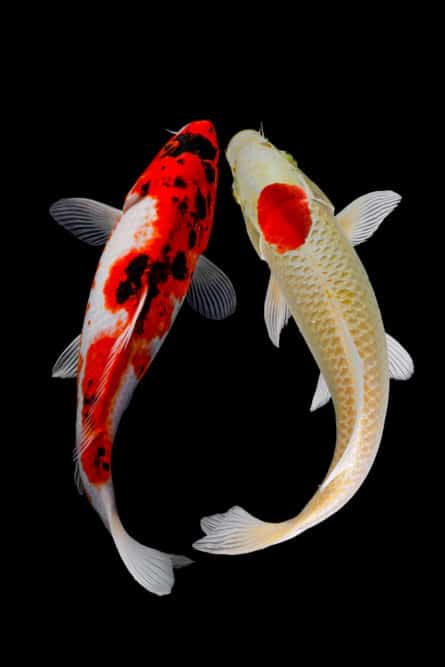
Koi fish can eat pretty much anything, aside from carbs. Feel free to give them:
They particularly enjoy shrimp!
Sick koi are easy to spot. Check the colors - if your Showa has any faded Beni or greyish Shiroji, they might be ill.
Additionally, if your Showa has a swollen abdomen or suddenly gets very thin, contact your vet. You should also call your vet if your koi fish is flashing or scraping its body against the tank/pond.



